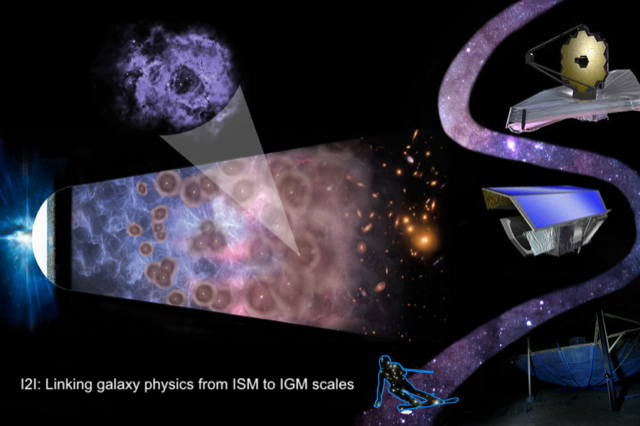I2I: Linking galaxy physics from ISM to IGM scales
LOCATION: Haus Sexten - Via Dolomiti 45, 39030, Sexten
DETAILS
The past few years have seen state-of-the-art observatories, such as the Hubble Space Telescope, ALMA/Noema, MUSE, Spitzer, Subaru and Lofar, providing tantalising glimpses of the earliest galaxies assembling in an infant Universe. These observations have shed light on the redshift evolution of a number of key galaxy properties such as their luminosity functions, the cosmic stellar mass/star formation rate densities, dust masses and indirect hints on ISM properties and (mass-metallicity) scaling relations. Despite this progress, a number of compelling outstanding questions persist including:
- What is the key ISM physics governing the emission lines seen at high-redshifts?
- What is the state of the CGM that might hold an appreciable gas component?
- What were the IGM conditions (temperatures, ionization, metallicity) at early epochs?
- How were galaxy formation and reionization driven by the interplay between galaxies and the IGM?
In this era of new and upcoming cutting-edge facilities, such as MWA, SKA, JWST, ELTs, EUCLID, Subaru/HSC and SPICA, it is also pertinent to discover and exploit the synergies between these different instruments in order to build a coherent picture of the Universe. Our aim is to bring together observational and theoretical experts in order to build a panchromatic picture of structure formation, galaxy build-up, and reionization and start a discussion on how to generate and exploit synergies between the next generation of observatories and between theoretical modelling and observations.
Sessions:
The interstellar medium and circum-galactic medium:
Lisa Kewley Danielle Berg Daniel Schaerer Andrea Ferrara Xavier Prochaska
This conference is supported by ERC Starting grant (ERC-Stg-717001; PI: Dayal)
RELATED FILES
FEE
250 Eur
WORKSHOP CODE FOR BUS AND PAYMENT
L2L22
ORGANIZERS
SOC: Corresponding Organiser: Dr. Pratika Dayal (Groningen University, The Netherlands) Dr. Masami Ouchi (National Astronomical Observatory of Japan / University of Tokyo, Japan) Dr. Laura Pentericci (INAF- Observatory of Rome, ltaly) Dr. Dan Stark (University of Arizona, U.S.A) Dr. Cathryn Trott (ICRAR - Curtin University, Australia)

